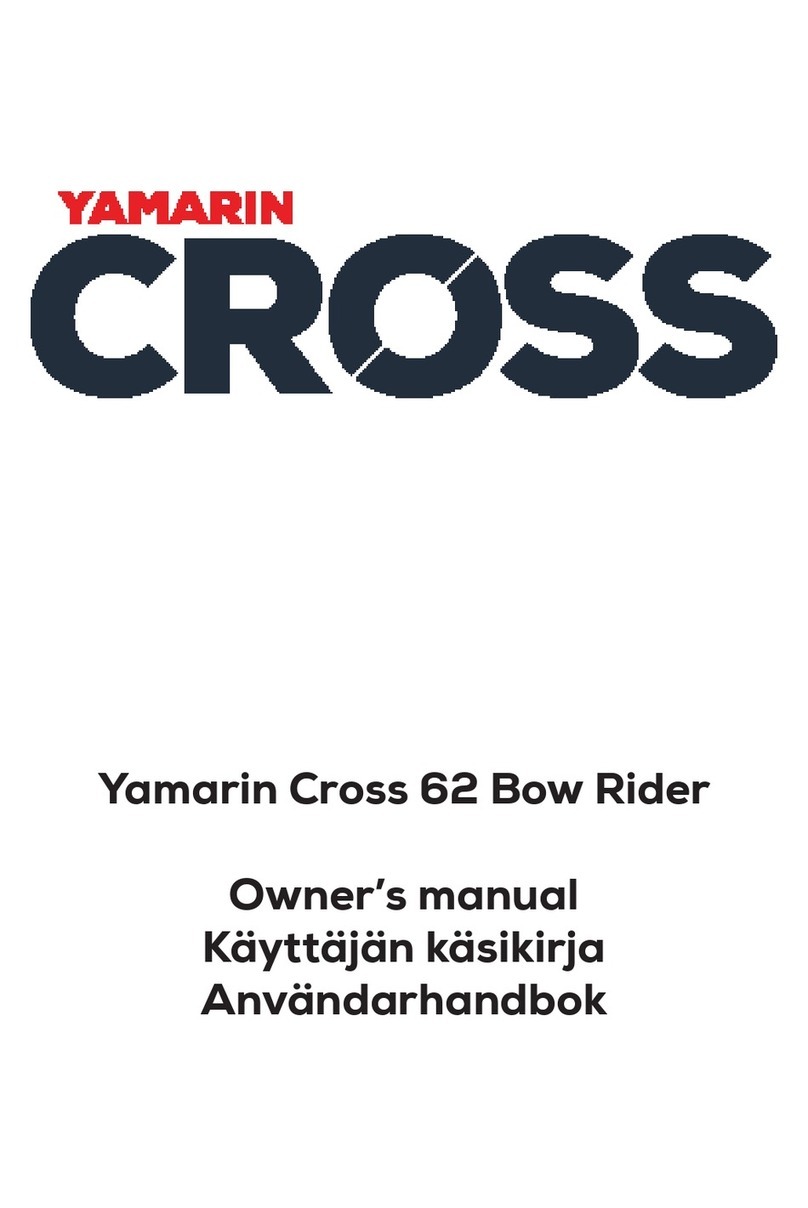Yamarin Cross 64 Bow Rider 5 (49)
BEFORE YOU ET OFF
Familiarise yourself with this owner’s manual.
Always check at least the following items before leaving:
−
−−
−
Wea her condi ions and forecas
Take the wind, waves and visibility into account. Are the design category, size and
equipment of your boat, as well as the skills of the skipper and crew, adequate for the
waters you are headed for? Hull windows and hatches must be battened down during
high wind and rough seas to prevent water incursion.
−
−−
−
Loading and s abili y
Do not overload the craft, and distribute loads appropriately. Heavy items are to be
placed in the storage compartments under the aft bench. Also note that the boat is less
stable if people stand up when on board.
−
−−
−
Passengers
Ensure that there are personal flotation devices or lifejackets for all people on board.
Agree on crew tasks before setting off.
−
−−
−
Fuel and fuel sys em
Make sure that the boat has enough fuel, including a 20% reserve for heavy weather or
other unforeseen eventualities.
−
−−
−
Engine and manoeuvring equipmen
Check the function and condition of steering and remote control, and carry out routine
checks according to the engine manual.
−
−−
−
Seawor hiness of he boa
Check the boat’s seaworthiness: no fuel or water leaks, safety equipment available on
board, etc. Check that there is no water in the bilge.
−
−−
−
Equipmen s owage
Check that all onboard items are positioned so that they will stay in place even in rough
seas and high winds. Please note that the seat cushions may fly overboard if they are not
fixed properly with press studs.
−
−−
−
Nau ical char s
Unless you are navigating in completely familiar waters, ensure you have nautical charts
on board that cover a large enough area! If your boat is equipped with a chart plotter,
learn to use it before setting off. Ensure that the plotter charts are of the latest edition.
−
−−
−
Leaving he ber h
Agree with the crew who will release each mooring line, etc. Be careful not to let
mooring lines or the anchoring line become fouled in the propeller during manoeuvring.
−
−−
−
Obliga ory equipmen
What is considered obligatory equipment varies between different countries. Find out
what is required for your boat.
You will find addi ional ins ruc ions concerning he engine in he separa e engine manual.






























